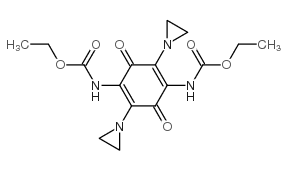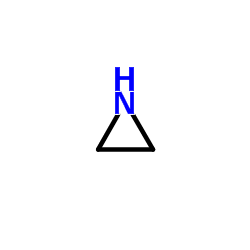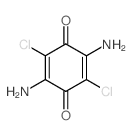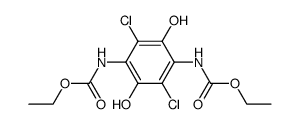57998-68-2
| Name | ethyl N-[2,5-bis(aziridin-1-yl)-4-(ethoxycarbonylamino)-3,6-dioxocyclohexa-1,4-dien-1-yl]carbamate |
|---|---|
| Synonyms |
AZQ
2,5-di(aziridin-1-yl)-3,6-bis(carboethoxyamino)-1,4-benzoquinone 3,6-bis<(ethylcarboxy)amino>-2,5-diaziridinyl-1,4-benzoquinone 2,5-diaziridinyl-3,6-bis(carboethoxy-amino)-1,4-benzoquinone diaziquone CI-904 Diaziquonum [INN-Latin] Aziridinylquinone Aziridinylbenzoquinone |
| Description | Diaziquone (Diaziquone) is a water-soluble, synthetic aziridinylbenzoquinone with potential antineoplastic activity[1]. |
|---|---|
| Related Catalog | |
| In Vivo | Diaziquone (6.75mg /sq m daily for 5 consecutive days or single-dose 26 mg/sq m) has a broad range of activity of diaziquone against primary nervous system tumors and has enhancement effect combined with either 1,3-bis(2-chloroethyl)-1-nitrosourea or procarbazine in athymic mice[1]. Animal Model: Homozygous nu/nu BALB/c athymic mice[1] Dosage: 6.75mg /sq m or 26 mg/sq m Administration: 6.75mg /sq m daily for 5 consecutive days or single-dose 26 mg/sq m Result: Showed rapid clearance in the plasma of athymic mice with a half-life of approximately 11.5 min. Produced significant growth delays. Produced significant increases in the median growth delay, significant increases in the number of tumor regressions. |
| Density | 1.45g/cm3 |
|---|---|
| Boiling Point | 469ºC at 760mmHg |
| Molecular Formula | C16H20N4O6 |
| Molecular Weight | 364.35300 |
| Flash Point | 237.4ºC |
| Exact Mass | 364.13800 |
| PSA | 116.82000 |
| LogP | 0.34240 |
| Index of Refraction | 1.62 |
CHEMICAL IDENTIFICATION
HEALTH HAZARD DATAACUTE TOXICITY DATA
MUTATION DATA
|
|
~85% 
57998-68-2 |
| Literature: United States of America Patent: US4337196 A1, 1982 ; |
|
~78% 
57998-68-2 |
| Literature: Dzielendziak, Adam; Butler, John Synthesis, 1989 , # 8 p. 643 - 645 |
|
~% 
57998-68-2 |
| Literature: Dzielendziak, Adam; Butler, John Synthesis, 1989 , # 8 p. 643 - 645 |
|
~% 
57998-68-2 |
| Literature: Dzielendziak, Adam; Butler, John Synthesis, 1989 , # 8 p. 643 - 645 |
|
~% 
57998-68-2 |
| Literature: Dzielendziak, Adam; Butler, John Synthesis, 1989 , # 8 p. 643 - 645 |
|
~% 
57998-68-2 |
| Literature: Dzielendziak, Adam; Butler, John Synthesis, 1989 , # 8 p. 643 - 645 |
|
~% 
57998-68-2 |
| Literature: Dzielendziak, Adam; Butler, John Synthesis, 1989 , # 8 p. 643 - 645 |
| Precursor 6 | |
|---|---|
| DownStream 0 | |







